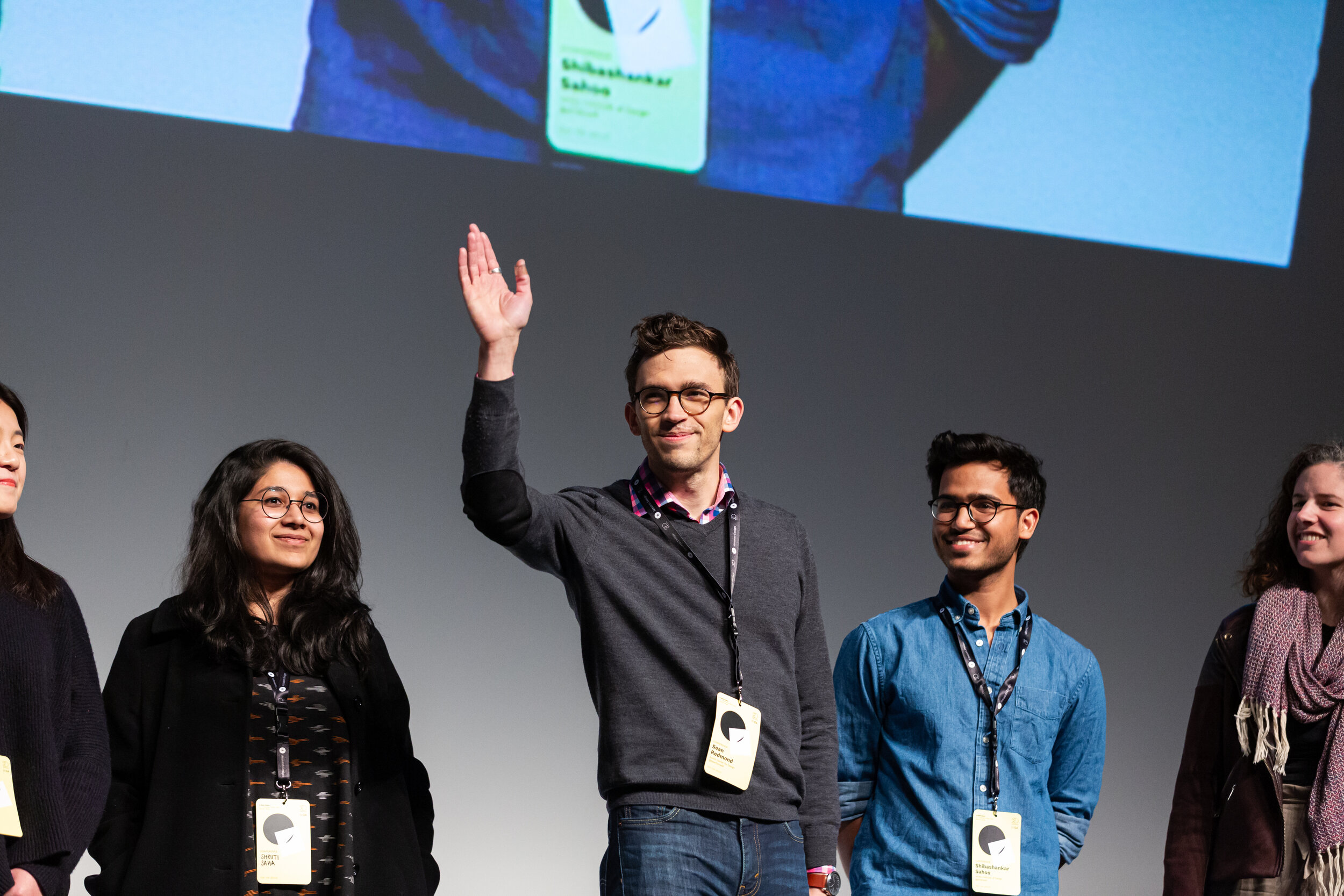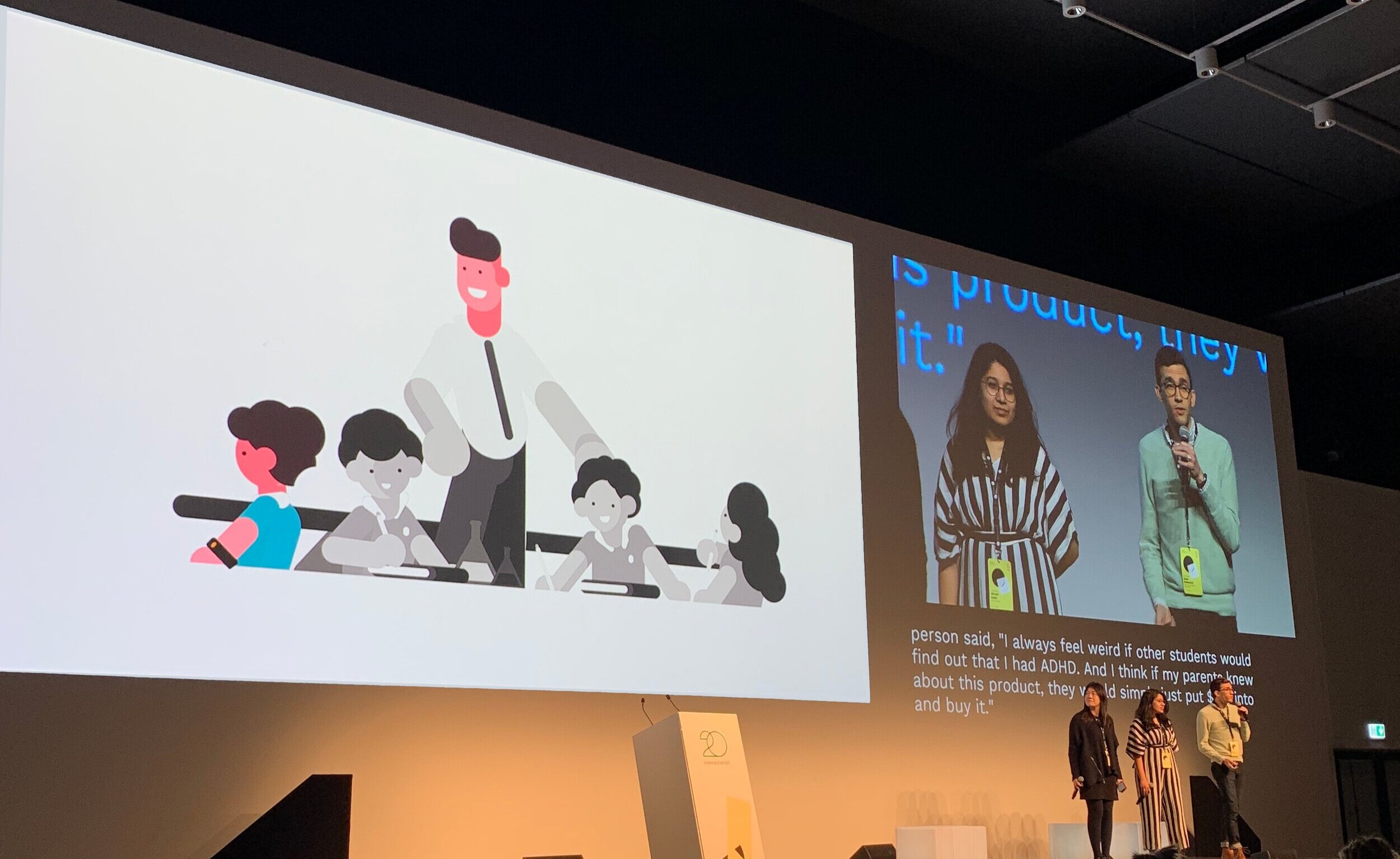Using Alexa to Help Students with ADHD
The Opportunity: I was chosen to participate in the Student Design Charette at the Interaction Design Association’s 2020 IxDA conference in Milan, Italy, in February 2020. We were given three days to research and put together a design idea and presentation for how a voice-enabled assistant like Amazon’s Alexa could be used to empower people with disabilities.
The Outcome: Our team chose to help students with ADHD improve their focus in the classroom. After conducting research and speaking with former students with ADHD and parents of students with ADHD, we created an idea for a wearable band that, when activated with a trigger word from the teacher, would softly vibrate on a student’s wrist, helping to redirect their focus.

Research & Pivot
We spoke with 4 individuals: a former student with ADHD, a parent of a young student with ADHD, a former special education teacher, and a school district consultant working to improve special education services. We also worked closely with Amazon executives and voice user interface designers to better understand the possibilities and limitations of current voice-enabled assistance technology.
Our initial idea was to use biometric information to recognize when the student’s attention begins to wander and then record the teacher’s lecture at those times, so the student could replay it after class. We quickly learned that this was not technologically feasible and that it would create significant privacy issues.
We then pivoted to the idea of a voice-activated wearable band that, when triggered by a key word spoken by the teacher, would vibrate softly. This would reorient the student’s focus without interrupting class or bringing unwanted attention to the student.
My Teammates: Yuan Chen and Shruti Saha
My Role: research, design strategy, synthesis, ideation
Conducted 90- to 120-minute interviews
1 former student with ADHD
1 parent of a student with ADHD
1 former special education teacher
1 education consultantConsulted with voice-enabled technology experts on feasibility
Conducted research on existing technology to assist students with ADHD
Created storyboards and product prototypes
Created a video presentation of our design idea that was shared with all IxDA participants
Insights & Ideation
1. Students with ADHD have difficulty recognizing when they have lost attention, but can learn to redirect their focus with assistance and practice.
2. Students with ADHD can feel stigmatized in classrooms when they are punished for poor behavior, especially when they are the only student with ADHD in class.
With these insights in mind, we looked to how we could reduce stigma in the classroom for students with ADHD while empowering them to better maintain their focus.
In our secondary research, we discovered that vibrating watches are helpful for children and adults with ADHD, as the vibration brings their attention back into focus. By vibrating periodically throughout the day (as scheduled by the student), it helps regulate students’ attention.
We determined that adding voice-enabled assistant technology to a vibrating watch could allow the teacher to gently bring a student’s focus back to class at exact moments when needed, which would help the student to stay better engaged.
A girl checks her WatchMinder vibrating watch.

Product & Presentation
During our three-day design sprint we created the concept for a product called Zooom. Zooom is a voice-activated piece of wearable technology designed for elementary-age students with ADHD.
Zooom is a wristband that can be programmed to recognize key phrases from the teacher’s voice. When the teacher realizes the student is not paying attention in class, they can say the key words, which would then cause the student’s band to softly vibrate. This would allow the teacher to get the student’s attention without interrupting the class and causing embarrassment to the student.
For example, if a teacher were to use the phrase “Power Up,” they could say a phrase like, “Alright students, let’s power up!” as a way to both energize the class to tackle assignments and to subtly activate the student’s band and refocus their attention.
Zooom would allow students to work with their teachers and parents to take control of their academic performance. All parties would be able to track the student’s progress through a weekly performance chart that indicates how often their attention had to be refocused.
By capturing this information, the experience can be gamified. Students will want to see if they can improve their performance each week, and parents and teachers can incentivize this behavior. This will lead the student to try to be more present in the classroom and gradually help the student learn to become aware of when they are losing focus.
Our video presentation can be viewed below and was showcased at the IxDA conference in Milan, Italy, in February 2020.
A weekly chart would update students, parents, and teachers on the number of times a student’s attention had to be refocused.
Zooom is a design idea created to empower students with ADHD using voice-enabled assistance technology. This video was created and presented with Yuan Chen and Shruti Saha at the Interaction Design Association’s 2020 IxDA conference in Milan, Italy.





